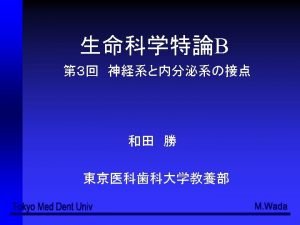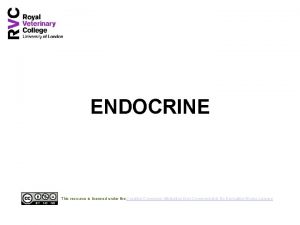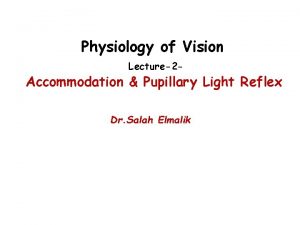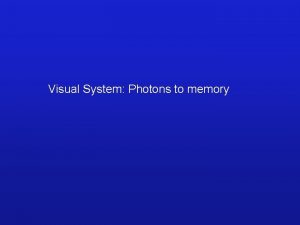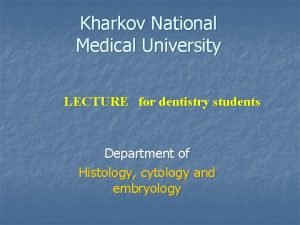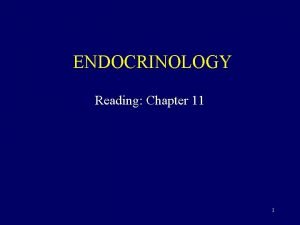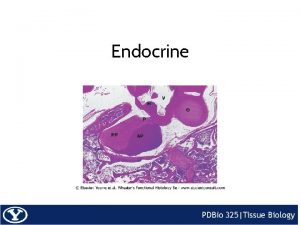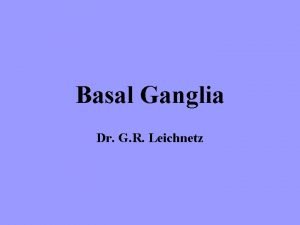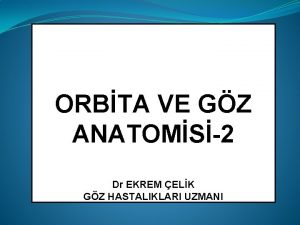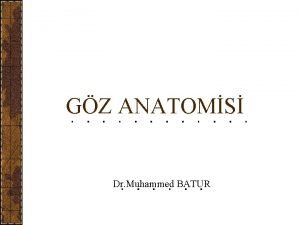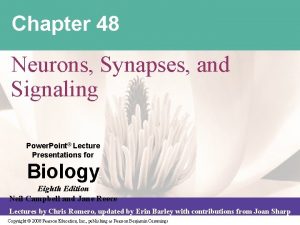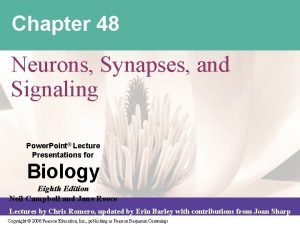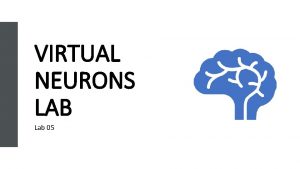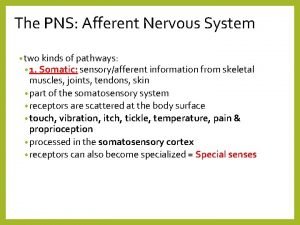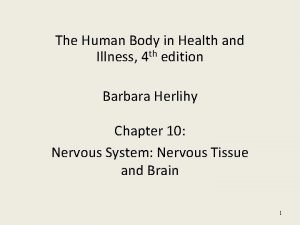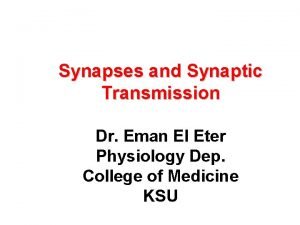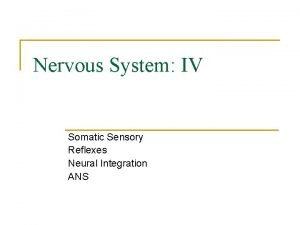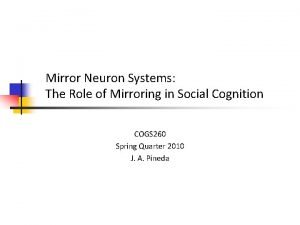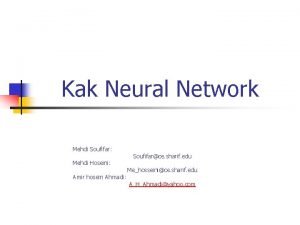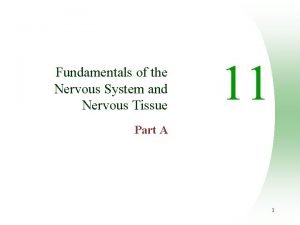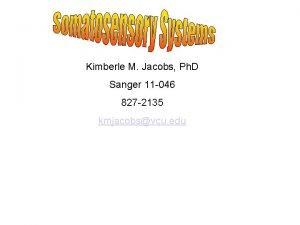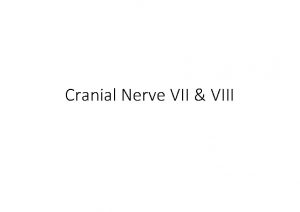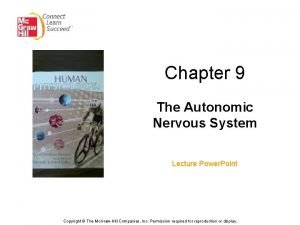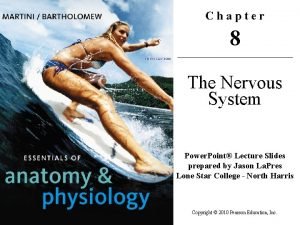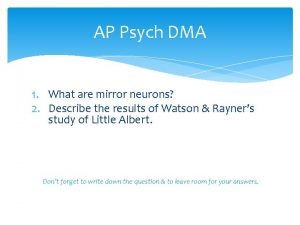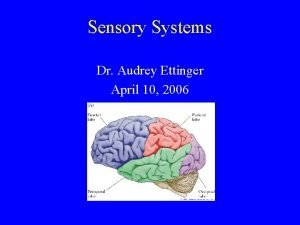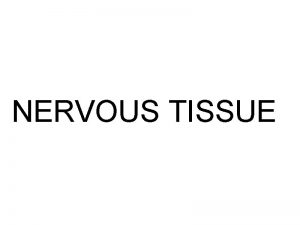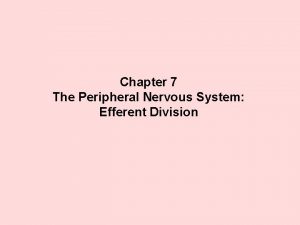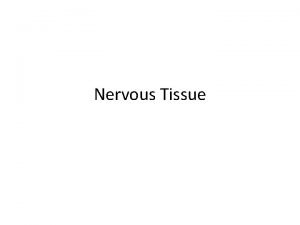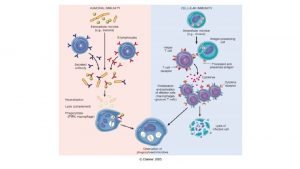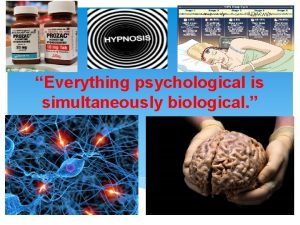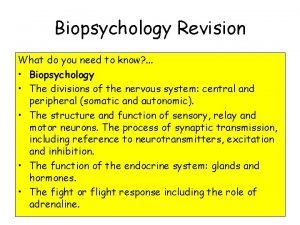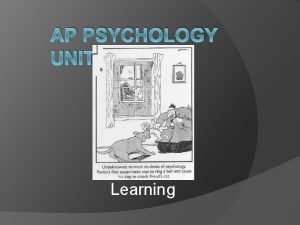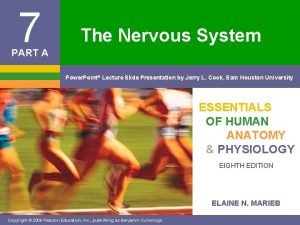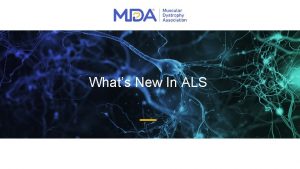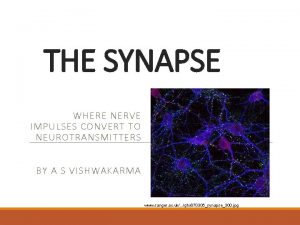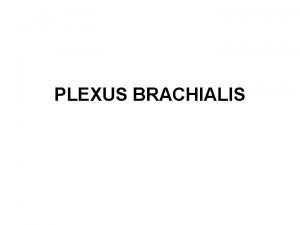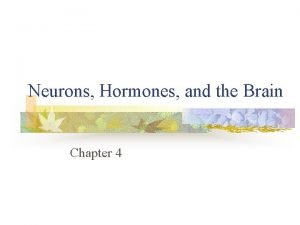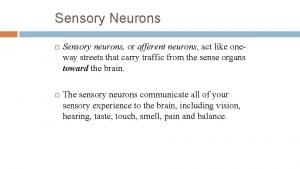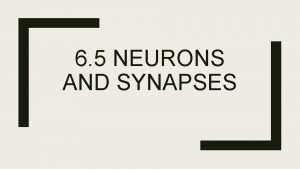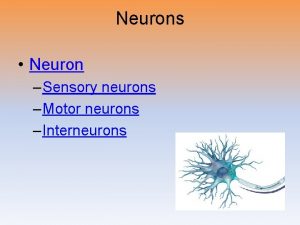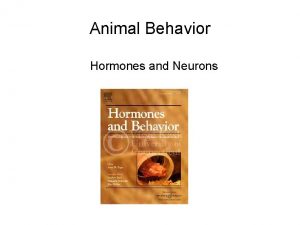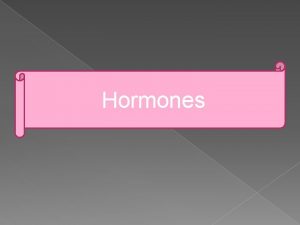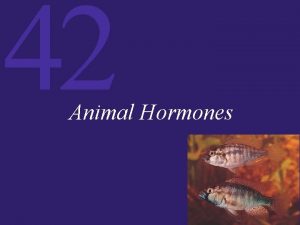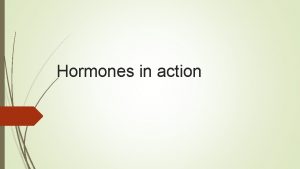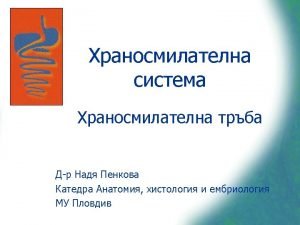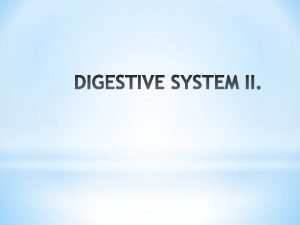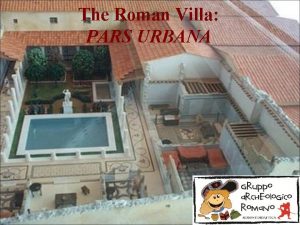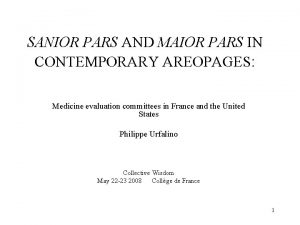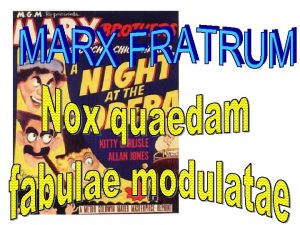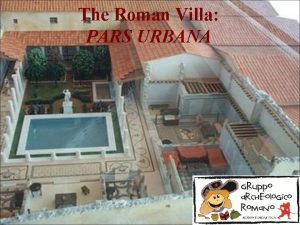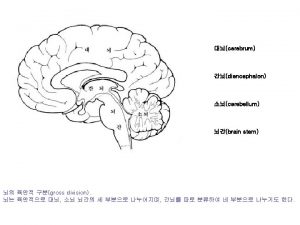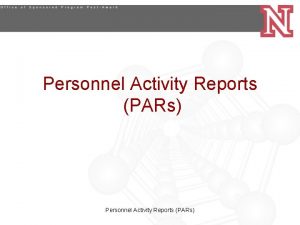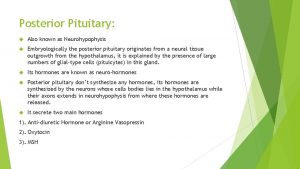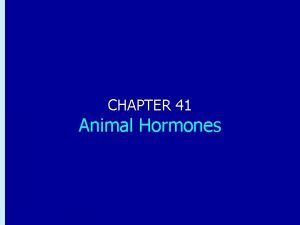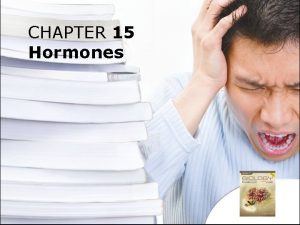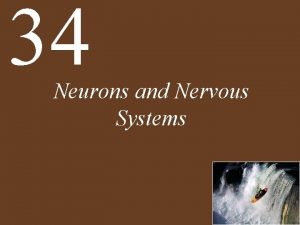Neurohypophysial Hormones Chapter 7 Neurohypophysis Magnocellular neurons Pars














































- Slides: 46

Neurohypophysial Hormones Chapter 7

Neurohypophysis • Magnocellular neurons – Pars nervosa – 2 pr hypothal nuclei (fig 7. 1) – Hold secretory granules • Neurohemal • Traverse down infundibular stalk • Post pit from neural ectoderm – Pituicytes; mostly glial


Neurohypophyseal Hormones • Oxytocin (OT), Arg Vasopressin (AVP; ADH) – Structurally related – 9 aa’s; disulfide bridge; 3 aa tail (carboxy term) • Genes for precursor prot’s – Chromosome 20 – Gene duplication (? ) – Opp DNA strands



• Close assoc’n w/ neurohypophysin – Posttransl’n cleavage prod of proprot • Cleavage w/in sec granule – One for each hormone – Complex before excr’n – No physio action – May be transporters • PVN cell bodies mostly prod OT; SON cells bodies mostly prod AVP – Both types found in each region – Species differ

Hormone Release • Stim signals – Body sensory receptors • OT: breast; AVP: blood vessels • Afferent neurons spinal cord, other pathways SON, PVN cell bodies – Rostral midbrain connections SON, PVN • Exc – cholinergic; Inh – noradrenergic – Interneurons near secretory neurons may modulate

• Release w/ depol’n axons – Neurosec granules fuse w/ cell membr – Ca impt – Hormones vessels • OT may encourage own release – OT in SON, PVN incr’d OT release – PRL impt

Vasopressin Regulates Body Fluids • ECF/ICF – Homeostasis protection ICF, cell components – IVF easiest to control • Why blood? • Why maintain blood pressure?


• BP can be maintained through IVF vol – Or through art smooth muscle contraction • Fluid vol control through kidney – Prox tubule: most reabs’n most water, electrolytes • Luminal membr renal endothelium has water channels (aquaporins) – Distal tubule, collecting duct can become permeable to water w/ hormonal signal • Vasopressin




Vasopressin • Human arg in position 8 • Coexpressed w/ CRH in parvocell paraventric neurons – Potentiates CRH response @ corticotrophs • Can function as neurotransmitter – Antipyretic (lowers body temp) • Receptors heptahelical, G-prot coupled

Osmoregulation • If incr’d body fluid osmolality (mostly Na) – stim’n hypothal osmoreceptors • Not related to SON, PVN prod’ng cell bodies • Sensitive to blood [electrolyte] changes – Stim’d @ plasma osmolality >280 m. Osm/kg • Specific – Na. Cl, sucrose – Not glucose, urea – AVP rel’d

• If decr’d blood vol, pressure – stim’n baroreceptors • Heart LA, aortic arch, carotid sinus • Afferent signal vagal, glossopharyngeal nerves • Stim’n when bp decr’d >8% – AVP released


• Other AVP regulators – Renin-angiotensin system • Na, so fluid osmolarity – CNS symp input • Book: both receptor signals impinge on AVP-producing cell bodies • Overall: AVP incr’d bp by – Retention of water – Incr’d contraction vasc smooth muscle


Mechanism of Vasopressin Action • In kidney collecting duct epithelium • V 2 renal receptor; ad cyclase coupled – Four subtypes – Others through inositol/Ca • Book: toad bladder model – Epith sheet – Basal water barrier @ mucosal side • Analogous to renal tubule lumen • Other: serosal

• AVP @ serosal side – change in water permeability – barrier decr’d – water transport mucosal to serosal • Withdrawal AVP reversal

• In nephron collecting duct – Basal level water barrier @ luminal (apical) side – Endothelial cell vesicles in subapical area • Contain prot’s that can form water channels (aquaporins) – Membr-integral prot’s – 9 identified – Type 1 (AQ 1) in prox tubule • Type 2 aquaporins – Exclusive to renal collecting duct endothelium – Biosynth • By AVP • Via CREB-mediated transcrn’l control


• AVP interaction w/ V 2 receptor (fig 7. 15) – ad cyclase activation – incr’d c. AMP – act’n PKA phosph’n AQP 2 mol’s – translocation vesicles • Actin filaments, dynein – fusion endosomal vesicles w/ apical membr – AQP 2 insertion into apical membr’s • PKA act’n also stim’s synth AQP 2 prot’s – Through c. AMP-linked Response Element


• Now water moves w/ concent gradient – Dilute urine collecting duct endothelial cells • Another AQP (type 3; also 4? ) found in basal (serosal) membr – Allow water ISF IVF – ISF here highly concentrated • Antiparallel to ascending limb of nephron loop • Impt to urine concent – AQP 3 induced w/ dehydr’n (not linked w/ AVP) • AVP also regulates urea concent in kidney medulla (impt to urine concent)


• AVP also – Stim’s release ACTH release cortisol • Synergistic w/ CRH – Stim’s release TSH; may regulate • Equipotent w/ TRH • AVP incr’s bp by regulating contraction vasc smooth muscle – Through tyr phosphorylation of enzyme-active receptor • V 1 vascular receptor

Oxytocin Activity Related to Reproduction • Several functions – Milk release – Uterine contraction at parturition – Vascular smooth muscle response – Maternal/mating behavior • Most specific to females • Transitory

Oxytocin Hormone • Nonapeptide • Secr’n stim’d by – Cervicovaginal stretch receptor act’n – Stim’n nipple, clitoris – Psychosensory input (lactating women) – Dehydration, stress (AVP) • Secr’n inhib’d by – Ethanol

• OT receptor – Encoded by chromosome 3 – Heptahelical – G-prot coupled (Gaq) – PLC signaling pathway incr’d Ca (from stores + extracell)

At Mammary Gland • Suckling – act’n sensory nerve endings – afferent signals through spinal cord hypothal – OT release • OT mammary gland myoepithelial cells (fig 7. 4, 7. 5) – Binding OT receptors incr’d intramammary pressure – milk expresion to ducts, alveoli, nipples

At Uterus • Descent fetus – cervical/vaginal stretch receptor act’n – OT release from post pit • Positive feedback mech til birth • Get incr in both freq, amplitude of contractions

• Near parturition (20 -39 wks), uterine myometrium more sensitive to OT – E 2 incr’d OT uterine receptors incr’d OT sensitivity – Progesterone low; can suppress OT receptor synth – BUT circ’ng OT not nec for labor initiation, maintenance • Uterine OT m. RNA incr’d more in pregnancy than hypothal (rat) • Uterus may be autocrine

• OT binding myometrium receptors – inhib’n Ca ATPase Ca out of intracell stores – IP 3 involvement Ca out of intracell stores – (with incr’d intracell Ca) act’n Ca membr channels • depol’n myometrial cells open voltage-gated channels • influx extracell Ca

• Prolonged elevation intracell Ca – calmodulin act’n – kinase act’n – phosph’n myosin – contraction

• Also OT interacts w/ receptors in both myometrium + endometrium – synth PGF 2 a (ovine endometrium) • Incr smooth muscle contraction – Estrogens incr’d activity PG synthetase, so enhance PGF 2 a • OT-induced myometrial contractions also endometrial PGF 2 a induction

• Progesterone involvement – Antagonizes estrogen effects – Maintains endometrium (pregnancy) – Is maintained by CL • OT uterus PG’s – CL luteal regression – decr’d progesterone – depress maintenance of pregnancy

• Also, now decr’d progesterone decr’d antagonism of estrogen effects – incr’d PGF 2 a in endometrium, – incr’d OT-induced PGF 2 a in myometrium • Overall, incr’d uterine contraction


Vascular Smooth Muscle • OT may constrict or relax – Depends on site – May be distinct receptor types for 2 responses • Some cross-over w/ AVP – More OT receptors in umbilical vasc – More AVP receptors in aorta vasc

Maternal Behavior • OT incr’d maternal behavior in virgin females (rat) – May need E 2 – Ovariectomization negates effect • OT may be rel’d @ many brain sites at parturition – Acts as neurotransmitter – Inhibits memory/retrieval (? ) • Opp AVP • Block recall pain of labor

Mating Behavior/Sexual Response • Hypothal VMN controls some female mating behavior – E 2 induction OT receptors – Progesterone • incr’d OT receptor binding • expansion brain area covered by receptors • Plasma [OT] incr’d during sexual arousal (human) – Female – incr’d uterine, vaginal smooth muscle – Male – incr’d repro smooth muscle contraction

Other OT Activities • Inhib CRH-mediated ACTH secr’n (human male) – Stress response? • Stim release PRL – PRL needed to produce milk • Book: control feeding behavior
 Pars nervosa neurohypophysis
Pars nervosa neurohypophysis What cell
What cell Accommodation reflex physiology
Accommodation reflex physiology Magnocellular layers
Magnocellular layers Neurohypophysis
Neurohypophysis Neurohypophysis
Neurohypophysis Herring bodies pars nervosa
Herring bodies pars nervosa Basal ganglia
Basal ganglia Pars plana pars plicata
Pars plana pars plicata Korpus siliare
Korpus siliare Chapter 48 neurons synapses and signaling
Chapter 48 neurons synapses and signaling Chapter 48 neurons synapses and signaling
Chapter 48 neurons synapses and signaling A hormone
A hormone Chapter 45 hormones and the endocrine system
Chapter 45 hormones and the endocrine system Virtual neurons
Virtual neurons Cutaneous mechanoreceptors
Cutaneous mechanoreceptors Polarized vs depolarized neurons
Polarized vs depolarized neurons 1st order 2nd order 3rd order neurons
1st order 2nd order 3rd order neurons Dr eter
Dr eter Input neurons
Input neurons Alpha and gamma motor neurons
Alpha and gamma motor neurons Damping function of stretch reflex
Damping function of stretch reflex Location of sensory neurons
Location of sensory neurons Mirroring 260
Mirroring 260 Input neurons
Input neurons Neuronal pools
Neuronal pools Pyramidal and extrapyramidal tracts
Pyramidal and extrapyramidal tracts Fourth order neurons
Fourth order neurons Fourth order neurons
Fourth order neurons Preganglionic fibres
Preganglionic fibres Figure 8-2 neurons and neuroglia
Figure 8-2 neurons and neuroglia Mirror neurons ap psych
Mirror neurons ap psych Characteristics of sensory neurons
Characteristics of sensory neurons What are neurons composed of
What are neurons composed of Junction between two communicating neurons
Junction between two communicating neurons Efferent motor neurons
Efferent motor neurons Nervous tissue
Nervous tissue Neuronal pools are collections of
Neuronal pools are collections of Information flow through neurons
Information flow through neurons How neurons communicate
How neurons communicate Characteristics of sensory neurons
Characteristics of sensory neurons Transmission of a nerve impulse
Transmission of a nerve impulse Habituation ap psychology
Habituation ap psychology Unipolar neurons are found in
Unipolar neurons are found in Upper motor neurons
Upper motor neurons Neurons
Neurons Hydra neurons
Hydra neurons
